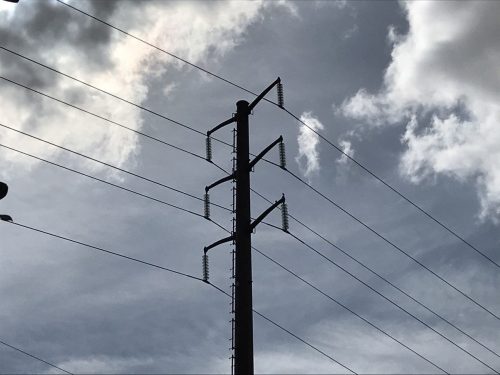Reading the last couple pages of this discussion, it occurred to me that they could probably make the $8/kW/mo. a Minimum Charge and leave the rest of the NEM Tariff alone. That would address one major problem I have with the fixed monthly charge for solar customers because people with small systems will still be paying "grid charges" with their significant volumetric energy charges. If they are above the new Minimum, they won't incur any additional cost.
You're pretty close to the original CALSSA and SEIA proposals (at least in the near term) where they wanted a gradual glide path; and basically the imposition of minimums to the extent a future solar homeowner would have to start paying that elusive "fair share" but doing so in a way that wasn't a huge shock to the current residential solar sales-pitch in California.
The solar-rights groups have agreed that the NEM 3.0 policies should address the fixed costs problem and should require a homeowner to "pay more" of their fair share. And the moment CALSSA and SEIA conceded these issues, the IOU's ran with it. Unfortunately if you concede an inch to expert negotiators, they will claim a mile. And even worse, the CPUC is willing to get behind this IOU BS, and is ready to hand that mile over to the IOU's.
One thing that really frustrates me is how CALSSA have responded to the latest CPUC proposal. They keep repeating their own broken-record arguments that clearly aren't resonating with the CPUC. I want to know what was CALSSA's strategy for all this. Concede points, then hope the CPUC would act "reasonably" to help Residential Solar. On what planet did CALSSA think this was a winning approach?
From the latest Exparte with CALSSA and the CPUC:
In both meetings, Mr. Heavner and Ms. Unger expressed
that the proposed decision would effectively eliminate the opportunity for most customers to
install economically viable solar and storage systems. They urged that the decision be revised to
eliminate the solar fee, create a glidepath for reduced export compensation, provide greater
certainty for the full term of eligibility, and not change previous decisions related to existing net
metered customers.
That part in bold is literally what the IOUs and the CPUC want. The monopolies and the regulators do not want homeowners to install new meaningful systems under NEM 3.0. California now has a glut of solar, they don't want Jane-Homeowner to put a new array on their roof.
The utility grade solar market has wildly proliferated in the last decade due to the absurd subsidizes thrown at them to bring massive production online. NEM 3.0 says noon time solar is now only $0.03 to $0.05 per kWh on the avoided cost calculator. This pittance is because the utility producers have massive subsidizes to flood the market with solar. These producers don't come close to paying $8 per month per kW for their exports and fixed costs. Hell, it's likely the opposite; the utility scale solar get massive kick backs through those above-market PPAs and guaranteed market to pay for production.
These mega-scale solar profiting to over-produce, causing the marginal value of a residential solar export to be only $0.03-$0.05. Economics works; supply will intersect with marginal cost at scale. But what's unfortunate is the PPAs that PG&E has with these producers guarantees the IOU pays above-market rates around $0.20 per kWh to get some of this energy regardless of the market price. Then these producers pay $0.01 per kWh back to the grid to cover substations and fixed costs. Big frickin' whoop... the massive profit is going to the utility producer.
California homeowners are different; they didn't build their solar for a profit motive. The homeowners aren't the one causing massive inefficiencies in the energy market. And yet the California homeowner is the one being blamed for class warfare. You gotta hand it to the IOU's they developed and executed a brilliant game plan.
Zabe is right; there is a problem of too much solar in California. But the problem isn't due to Residential NEM. Unfortunately the CPUC is using residential NEM to fix the issue created by bad policy on the commercial-side. The CPUC wants to throttle new residential production while also asking homeowners to pay massively more fixed costs over time. After all, the CPUC cannot be bothered to ask the large-scale producers and non-residential producers to give up some profits.
CALSSA needs to start barking about how $20Bn of IOU waste isn't going to be solved by billions of extra fees collected from California Homeowners. This whole class warfare thing is the worst smokescreen, and CALSSA seems to be willing to battle in the rich vs poor fog.




